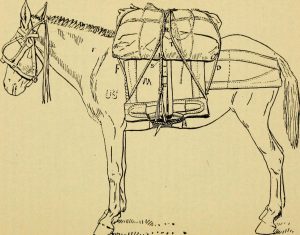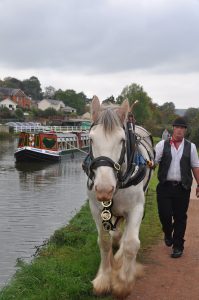
It is time to review how draft animals are connected to their loads. The simplest example would be a pack horse or a mule, in the days when mule trains carried clay to pottery workshops. The Devon clay that was transported this way earned the name of ball clay, since it was shaped into large balls and carried in a double bag carried on the animal’s back, where a saddle might otherwise have gone. Pack animals are often quite light, enabling them to cross rugged terrain, where roads were not available. It is important to keep a regularly updated note of a draft animal’s weight, taking care not to expect them to carry more than 15-20% of their current weight.

Carts redistribute a load, but slowing down or stopping can be more demanding, particularly when going downhill. The most efficient means of transport, particularly for heavy consignments such as building supplies, is the canal barge. This can be hauled by a (large) single horse, even when loaded with several tonnes of goods.



Leave a Reply